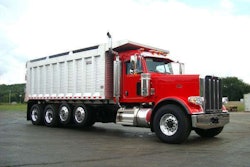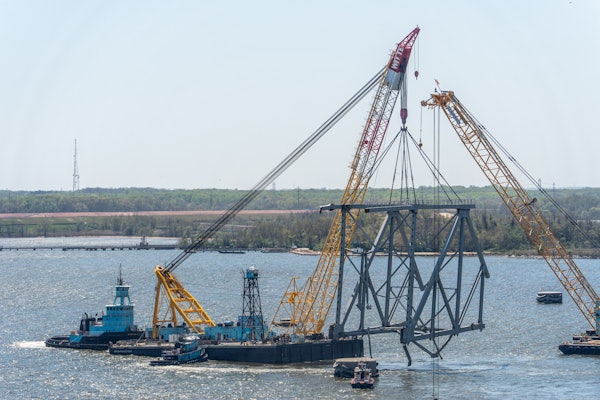Editor’s Note: This article originally appeared on our sister site, CCJ.
 A Peterbilt glider kit from Hoover’s Truck & Equipment. Dump fleets are 5.5x more likely to buy a glider.
A Peterbilt glider kit from Hoover’s Truck & Equipment. Dump fleets are 5.5x more likely to buy a glider.Nixing a decision issued just three weeks prior, the U.S. EPA says it will enforce the 300-truck annual limit placed on glider kit manufacturers by Phase 2 emissions regulations, meaning glider kit makers will be handicapped in their production until the EPA finalizes a rule to repeal the Obama-era regulations, which took effect January 1.
EPA spokesperson Molly Block says the agency is still working to produce a rule to rescind the glider-specific regulations within Phase 2, which would lift the 300-truck cap and allow glider manufacturers like Fitzgerald Glider Kits and Hoover’s to resume normal operations. Block says the agency is “will continue to work expeditiously to finalize a solution that provides regulatory relief and prevents any inadvertent economic harm to the glider industry while maintaining important air quality protections.”
The back and forth over glider kits is an issue impacting a large number of construction truck fleets. According to data from RigDig Business Intelligence, a sister company to Equipment World that specializes in generating in-depth fleet profiles, dump fleets are 5.5 times more likely to buy a glider than other fleets, while mixer fleets are 3.5x more likely.
In one of his last moves as head of the agency, former EPA Administrator Scott Pruitt issued a memo on July 6, his last day in office, stating that the agency would use “enforcement discretion” and not enforce the 300-truck cap through the end of 2019.
The non-enforcement decision was meant to provide the agency time to finalize a rule to permanently rescind the restrictions placed on glider kit makers. The agency issued a proposed rule in November 2017 to roll back the regs, but the rule has not yet been made final.
The agency’s non-enforcement policy announcement prompted a legal challenge from the Sierra Club, the Environmental Defense Fund and the Center for Biological Diversity, and a three-judge panel for the U.S. District Court in the D.C. Circuit issued an injunction forcing the EPA to enforce the 300-truck cap.
EPA Acting Administrator Andrew Wheeler issued a memo to EPA staffers on Friday, July 27, announcing the policy reversal. “After further consideration of the No Action Assurance and information before me, including the administrative and judicial petitions and motions, and the application of agency guidance regarding no action assurances to these particular facts, I have concluded that the application of current regulations to the glider industry does not represent the kind of extremely unusual circumstances that support the EPA’s exercise of enforcement discretion. I am therefore withdrawing the July 6, 2018, No Action Assurance,” the memo states.
Gliders are new truck bodies and chassis that are equipped with older, remanufactured engines and transmissions. They have traditionally been exempt from emissions regulations. However, EPA in its sweeping Phase 2 truck and trailer emissions regulations sought to stymie the segment’s growth over the past decade, which came in part due to more stringent emissions regulations placed on new trucks and engines. Gliders are also generally less expensive than new trucks.













